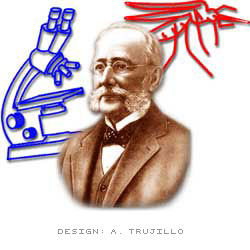|
In 1881, Cuban physician Carlos J. Finlay discovered the Culex or Stegomyia fasciata mosquito, known today as the Aedes aegypti, responsible for transmitting yellow fever. He reported this to the Science Academy of Havana and the International Sanitary Conference in Washington, D. C. that same year. However, 20 years went by for his claim to be accepted by the scientific world. This was so thanks to the report by Dr. Walter Reed to the International Sanitary Congress held in Havana in February, 1901.
Carlos Juan Finlay y Borres was born in Puerto Principe, today Camaguey, Cuba in 1833. He studied medicine at the Jefferson Medical College of Philadelphia where he graduated in 1855. He reconfirmed his diploma in Cuba and practiced medicine in Matanzas and Havana. For political reasons, he migrated to Trinidad in 1869 and returned to his country in 1870, for good. He was very much interested in the major health problems of his country. In 1881, he publicly announced his theory about yellow fever transmission through an intermediate agent. As the Spanish American war broke, Dr. Finlay, at the age of 65, joined the American government service as sanitary officer in Santiago de Cuba.
In 1902, the Cuban Government appointed him as chief sanitation officer of tne Nation and Chairman of the Superior Sanitary Board. During that time, Dr. Finlay never stopped conducting his experiments. With very scarce resources, he tested over 600 mosquito species. And he identified the fertilized female of the Aedes aegypti as the disease transmitter. He experimented on healthy volunteers, who having been bitten by the female mosquito developed the disease. Since he was very well acquainted with yellow fever, he properly monitored each case and discovered that after being infected, individuals became immune to future attacks. He thus anticipated a serum against this dreadful disease. However, scientists at the time were not willing to accept Finlay’s discoveries. In the meantime, the disease ravaged and took tens of thousands of lives in Cuba, the United States, Brazil, and the Caribbean and Central American countries.
After the 1901 International Congress, and not with little reluctance, Dr. William Gorgas started to apply Dr. Finlay’s principles in Santiago de Cuba, namely fighting the mosquitoes and isolating the patients. Within 7 months, yellow fever had been completely eradicated from the island. Fully convinced, Dr. Gorgas successfully applied the same principles to clean the Panama Isthmus. This made the Canal construction far easier. Carlos J. Finlay died in 1915. He published a large number of papers on many endemic diseases in the region. His work, however, was summarized in 1911 in the words of his friend, Dr. Juan Guiteras. “He discovered yellow fever was transmitted by the Stegomyia mosquito bite and he invented a safe method to eradicate the disease.” Carlos J. Finlay , an example of the best of the latin spirit. |
|
|
 Can
a man fight a mosquito for 20 years?
Can
a man fight a mosquito for 20 years?